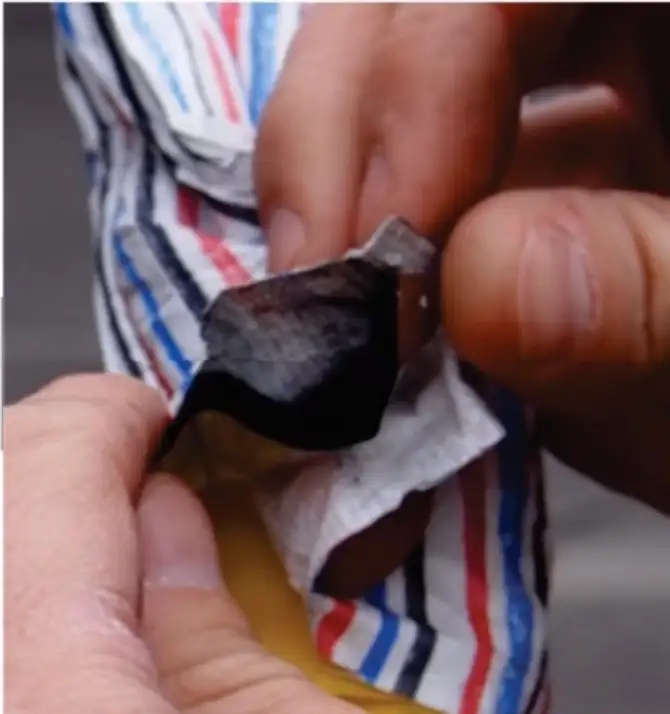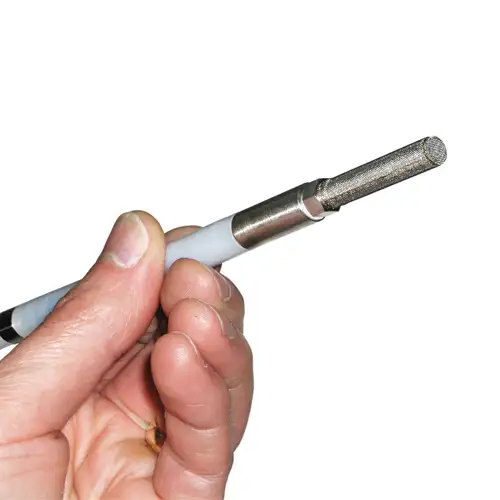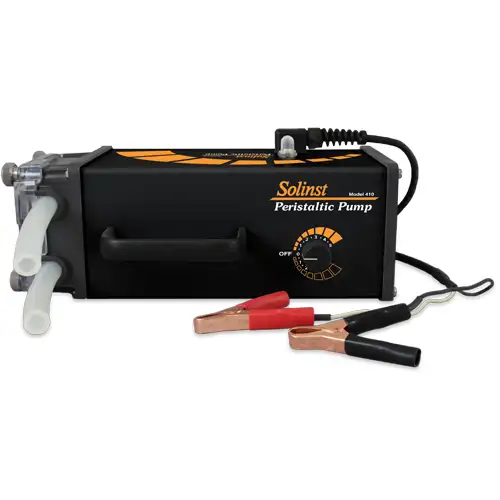
Model 405 FACT: Flute Activated Carbon Technique
Water Quality Probes
Solinst Eureka, a global leader in the design and manufacture of multiparmeter water quality sondes.
Solinst Field Services
Safeguard your project’s success and mitigate any potential for downtime or additional costs.

FACT – Flute Activated Carbon Technique
Our FACT service is an innovative method developed by Flute for mapping the dissolved phase contaminant distribution in a sealed borehole with 6″ to 3′ resolution.

Figure 1. FACT Construction, with the FACT stitched between the NAPL Flute cover (striped) and a diffusion barrier (silver).

Figure 2. FACT results for TCE on a 6″ scale.
How the Service Works
The pressure exerted by the liner on the borehole wall (generally 5 to 10 feet of water pressure) creates a strong seal which prevents preferential flows from developing. Concerns of influence by contact with borehole water are put to rest from the protection provided by the hydrophobic NAPL Flute cover and very fast installation and removal procedures. This minimizes interval exposure times (a few seconds). As a precaution, the borehole water is usually pumped from the hole as the liner is everted.
FACT Service Results
The measurements obtained by the FACT method are very representative and therefore show where the true contaminant peaks are located at depth. The replica contaminant distribution can be used along with Flute Transmissivity Profiling data to design a multi-level groundwater sampling system and fate/transport CSM.

Figure 3: Transmissivity Profile and FACT data. Note the high TCE concentrations at 112′ and 140′ BGS in very low transmissive fractures compared to low TCE concentrations in high flowing fractures at 90′ and 130′. The TCE concentrations at 140′ and 112′ are the same or twice as high, respectively, as the highest flowing fracture in the borehole at 130′ despite the fact that they are two of the lowest flowing fractures in the borehole. This data emphasizes the need for high resolution methods rather than coarse measurements to assure that all significant contaminant source zones are properly identified during characterization. Water Samples (green diamonds), validate the FACT concentrations.
TECHNICAL NOTES:
Installation Times
Solinst Flute liner systems should be installed as quickly as possible after the hole is drilled to minimize cross connection effects of the borehole water on the pore water in the open borehole.
Reaction Times
Vadose Zone
The FACT is typically left in place for 48 hours for a vadose zone installation to allow the diffusion process from the formation into the carbon.
Saturated Zone
The FACT should be left in place in the saturated zone for about two weeks due to the diffusion coefficient being much smaller in water than in air. A diffusion calculation shows that two days is long enough to “see” about 0.5cm into the borehole wall with 7% porosity. Concentration in pores is 2,700 ug/L. That improves after 2 weeks.

Academic Analysis of the FACT: A master’s thesis is available by Monique Beyer of the Danish Technical University which is a rigorous assessment of the FACT analysis method and its use for a fractured rock site.
Related Products
Enhanced Bioremediation
The Waterloo Emitter™ is a simple, low cost device designed for the bioremediation of contaminated groundwater. It enables oxygen or other amendments to diffuse through silicone or LDPE tubing in a controlled, uniform manner. Ideal for aerobic bioremediation of MTBE and BTEX, with minimal maintenance required.
3/8" Diameter Flexible Pneumatic Pump
The Micro Double Valve Pump has a remarkably small and flexible design. At 3/8" (10 mm) diameter it is small enough to sample groundwater from channels of a CMT System.
Rugged Peristaltic Pump
Compact, lightweight, and water-resistant, the Solinst Peristaltic Pump is designed for field use. One easy-access control allows various speeds and reversible flow. Ideal for shallow water and vapor sampling.
Tag Line – Rugged, Simple, Convenient
The Tag Line uses a weight attached to laser marked cable, mounted on a sturdy reel. Convenient for measuring depths during monitoring well construction.




